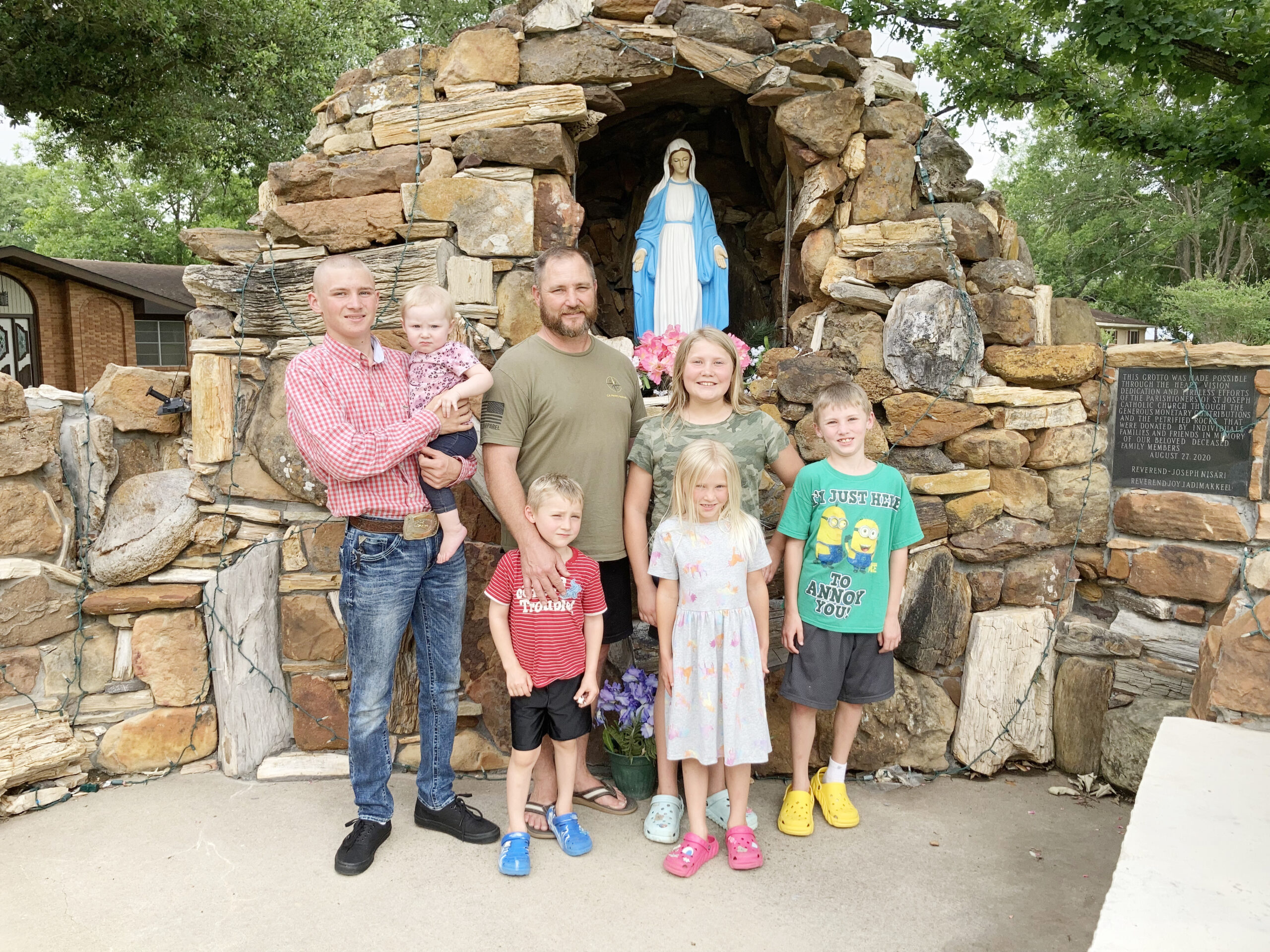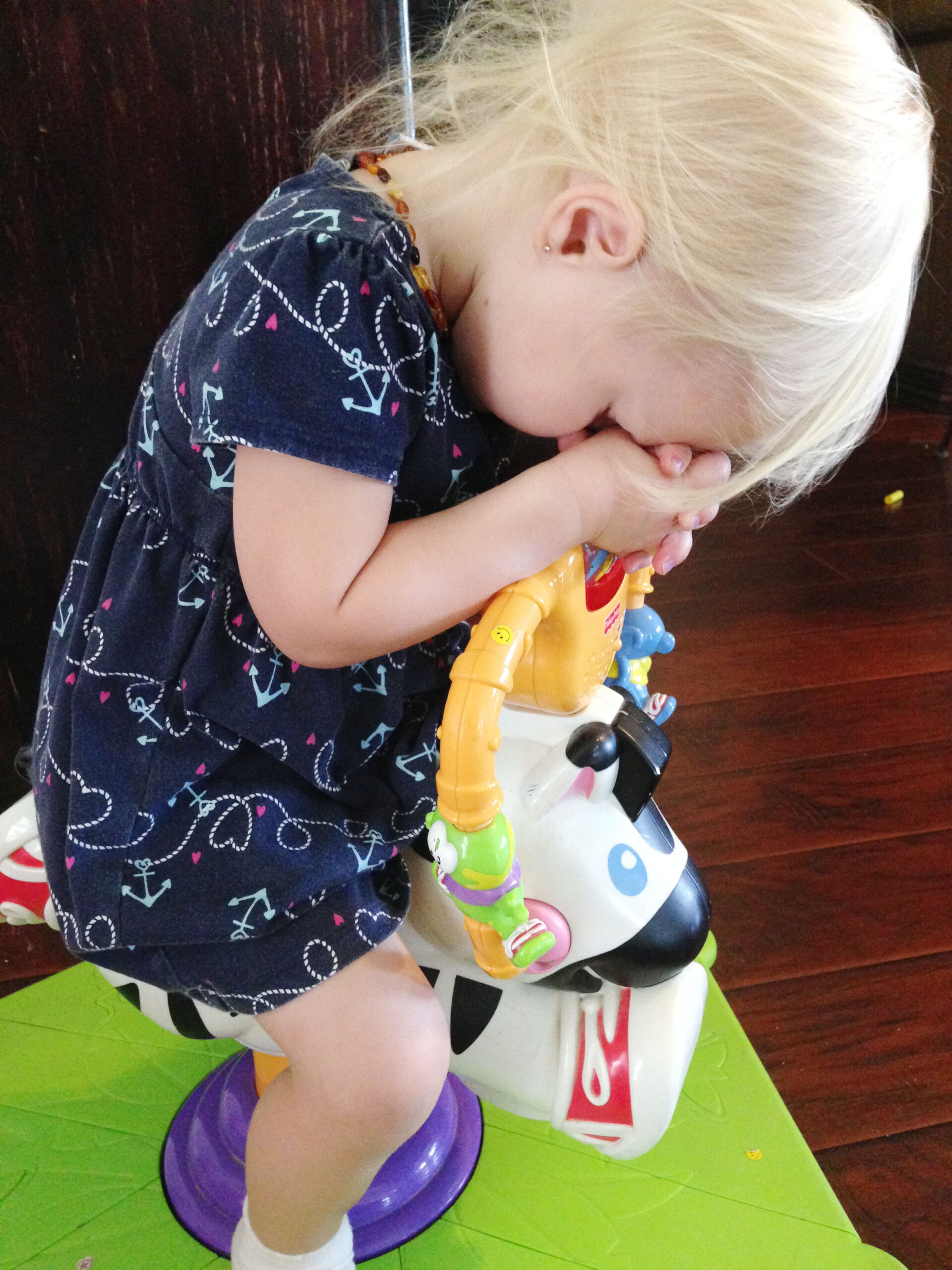Summary
Leigh’s life lessons about children and homeschooling are a real-life mix of trusting God, taking the bull by the horns, and worth reading.I wanted to write this article for Seton Magazine a few years ago, but I stopped myself. I thought, “Even after homeschooling for years, what advice and experience can I provide when most days I feel like I’m still trying to figure it all out?!”
But then God helped me realize that many homeschooling families probably feel the same. So, what can we do? We must “take the bull by the horns” and keep moving forward one day at a time.
Hi! I’m Leigh Blankenburg, a wife to my sweetheart, Ace, of seventeen years and a mother to eleven children (six on Earth who are 16, 13, 10, 7, 5, and 22 months; and five in Heaven). We live on my husband’s family’s ranch in a rural town in Texas.
We thoroughly enjoy raising our family in the country lifestyle and the valuable and moral life lessons involved. We have been homeschooling for thirteen years and have used Seton for twelve, and we love how each day is a rewarding challenge or a challenging reward.
Homeschooling was our call from God when our oldest was three years old and was ready for preschool.
We trusted God as Psalm 16:11 says, “You will show me the path to life, abounding joy in your presence, the delights at your right hand forever.” We very seriously took the vows at our wedding to raise our children Catholic and that the Church declares that parents are their children’s first teachers.
I want to share with you these life lessons learned from homeschooling by “taking the bull by the horns” and knowing that God will help us overcome adversity.
1. What Works With One Child Might Not Work With Another
This lesson applies to knowing that what tactics might work with one child might not work with another, as one child might be more of a visual learner as opposed to another being a more auditory learner.

Parents and children will have different strengths and weaknesses in certain subjects too.
One example I use is splitting up the math problems on worksheets, as my children often have tunnel vision when seeing more than ten problems. I have them do one line (or two) at a time, and then we move on to another subject.
When that subject is finished, they go back to do another line or two in math, and we continue this cycle until the school day is done. This method works equally well with handwriting. I have found that this helps to keep them calmer (and me calmer, too) and to provide a smoother day.
Thankfully, Seton’s lesson plans are easy to follow and lay all the instructions out to be tailored per child by the parents.
2. The Children Will Never Be the Same Age or in the Same Stage Next Year
Like the song Let Them Be Little by Billy Dean, children will do childish things. I must remind myself that children do not think or act like adults.
Our homeschool schedule has had to be tailored around newborns and their nursing on demand and varying nap times, which is when keeping them close to my heart in a sling has made teaching the older children easier.
I allow our toddlers to color or play while we do school or watch an educational show in a nearby room. Dr. Ray Guarendi’s book Discipline That Lasts a Lifetime has been a great help in our home for all ages and stages.
3. A Season for Everything
Babies may be born, appliances may break, people may get sick, and family members or friends may sadly move or pass away. Ecclesiastes, Chapter 3 reminds us there is a time for all things, and
“God has made everything appropriate to its time” (verse 11).
We sadly had a miscarriage this past November, and this caused our family to pause for a brief time. We grieved, healed with God’s grace, and took the time to enjoy each other and our loved ones during the holidays.
We embraced starting school again when the new year began and dove right into the books, knowing we were not moving on but moving forward.
4. Keep Things that are Most Important Constant
Children thrive off of routines, but don’t we all?

So, keeping to a routine, to the best of your ability, is all a homeschooling parent really can do because inevitably, someone will always need to go to the bathroom or not be able to find their shoes when it is time to leave to go somewhere (especially before Mass… which, we have learned to put our clothes AND shoes out the night before).
My husband and I are both converts to the Catholic faith, so we have really enjoyed trying to live more liturgically as we raise our little cradle Catholics. Kendra Tierney’s book, The Catholic All Year Compendium, has provided engaging ideas that have developed into wonderful traditions for our family for saint feast days and Church calendar seasons.
5. Be Flexible
Thankfully, with homeschooling, we can set our schedules!
For our family, we have found that year-round schooling works the best for us. We generally do school four days per week, with Monday or Friday as our flex day to catch up on extra work not completed during the week or the week prior.
Our flex day is reserved for well check-ups, dental appointments, or running errands. Sometimes, we need to finish up on the weekends if events came up during the week that detracted us from finishing our classes.
During Lent a few years ago, we gave up watching TV except for watching the daily Mass on EWTN (as daily Mass is not offered except on Wednesday evenings at our local parish; of course, we go to Mass on Sundays at our local parish church). Watching the EWTN Mass proved extremely beneficial to our children and me (and my husband when he works from home), so we adopted watching daily Mass into our homeschool routine.
Our day begins by saying our morning prayers after everyone has woken up, finishing morning chores (including our children currently bottle-feeding an orphan calf), having breakfast, watching daily Mass, and beginning our school day. We break at noon to pray the Angelus and our other noontime prayers and eat lunch. Then, we finish up with school until the nap time of the youngest child.
Some days, our schooling takes us into the evening hours with my older kids, but we work it in around cooking dinner. Dr. Greg and Lisa Popcak’s book, The Corporal Works of Mommy (and Daddy, too), provides many insightful examples of how to minister to the needs of our children in the ways Jesus teaches in the Gospel of St. Matthew 25: 35-36.
6. You Do Not Have to Do It All

I learned well after our second living child was born that I am not Super Mom, nor does God expect me to be.
It truly takes a village (Praise the Lord for the Communion of the Saints!), and amazingly many others around us want to help us out! Years back, when my kids were too little to help, I humbled myself to allow a trusted housekeeper to help me out every other week with the deep cleaning (even though I really do love to clean) because I am less stressed when the house is cleaned.
As my kids got older, they helped out between those major cleaning days, so if a housekeeper is in your budget, this is a great option, as homeschooling is a full-time job. Enlisting your kids to help is even better. We have established detailed age-appropriate routine charts, so all kids are helping.
We have reached out to our parents to help their grandchildren with their classes from time to time, which is excellent for a refresher course they might not have read about in some time. Choosing to pick up groceries curbside has also been a fabulous time saver, as has been keeping a punctuated planner of our family’s events.
I also strive to consolidate our kids’ well-checkups or dental appointments to save us from making unnecessary trips as we live in a rural area.
Lastly, I daily call upon my earthly mother and my spiritual Mother. Both my mother and the Blessed Mother are ready to listen and help. I gleaned many helpful hints from Kimberly Hahn’s book, Graced and Gifted.
7. Do Not Overcommit
Another nugget of truth learned all too well has been to “Let your ‘Yes’ mean ‘Yes,’ and your ‘No’ mean ‘No,” as Jesus teaches in the Gospel of St. Matthew 5: 27.
Kids do not need to be in EVERY activity outside of school to get them into college or Heaven. Seton, in my opinion, does an amazing job at engaging the interests of all types of children while providing ideas for extracurricular activities if needed or wanted.
We have tried several sports and 4H, but our kids thrive the best when just being kids and playing outside by riding bikes and running through the pasture. For 4H, they have raised animals from chickens to heifers to rabbits to pigs, but they found more enrichment in helping out more with the day-to-day responsibilities on our ranch of our own pets, chickens, cows, and horses gardening.
Raising animals is such a wholesome activity for the whole family that teaches from where food comes and how to care for animals. Our older children participate by ushering or altar serving at our church, and our kids are involved in CCD there, along with monthly youth activities. But, we make sure not to overcommit to activities that take us away from school and family. Kathryn Whitaker explains this well in her book (Live Big, Love Bigger).
8. Utilize Seton Resources for Help
I have found time and time again that the counselors at Seton are willing and ready to help through either email or phone calls.
They have helped reassure me in how to teach a math lesson or have provided suggestions to better myself with teaching multiple grades.
I also look forward to each newsletter that comes out and can relate to so many questions that Dr. Clark answers in her column. Dr. Mary Kay Clark’s book, Catholic Home Schooling, was a great start when I began homeschooling. I was grateful for her suggestion of using paper plates during lunchtime as this has truly helped us to cut down on some dishes. Scanning and uploading tests has also saved me a heap of time instead of mailing forms, as I did years ago.
9. Sleep When the Baby Sleeps
As noted earlier, we all take a daily “nap.”

I have learned to “sleep when the baby sleeps” as I function the best when I am well rested, so we all rest at nap time by either reading, watching TV, or playing quietly. Resting or napping applies to our older children, and quiet time keeps the sanity level of all in the home in check.
My grandmother once told me to do what I can do when the baby is asleep that I cannot do when the baby is awake. After laying down with my nursing baby or child to get the rest I need (usually 20 to 30 minutes at minimum), I then declare to my older children that this is “my time.” I either do a brief workout, prepare for dinner, organize, or spend extra quality time with my older children.
The older kids have learned to respect this time and the time I take for my prayers in the morning, generally, before they wake up and before we start school (when I do the dishes and make breakfast).
I used to be a night owl and stay up late trying to get things done or have quiet time, but God helped me to learn that getting up early before the kids is much wiser. If time and finances allow, date nights for mom and dad are a bonus too! These do not have to be fancy and can be simply an evening walk or a candlelit dinner and movie at home.
Some families can get their children to bed early most nights, but this is not the case for our high-need children. Their activity level seems to continue after the sun has set even though we follow a good bedtime routine of bath, dimming the lights, and praying our family Rosary before bed.
We have learned that all children are different, and life is more chaotic and stressful when we do not embrace this. Thankfully, Dr. Sears’ book, Nighttime Parenting, gives helpful tips on sleep for babies and children that are gentle and do not involve crying it out.
10. Go Outside
10,000 steps per day is a general recommendation for adults to take per day to stay active and healthy.

I used to think that I needed to get everything accomplished inside before I could go outside to play with our children, but I finally listened to God in the last few years that I need to be outside just as much as the children do. So, we enacted daily family walks (weather permitting) for at least 10 to 15 minutes per day down our gravel road. This allows us all to get fresh air and release the energy cooped up from being inside doing school and chores most of the day.
Staying active as a family corresponds directly with eating well. Fad diets are generally unhealthy, so we take a more traditional approach by using good fats (butter, whole milk, etc.) and trying to limit sugar (which can be difficult for children). Once-A-Month Cooking is an exceptional cookbook by Mimi Wilson and Mary Beth Lagerborg designed for cooking for large families. This would equally work well for smaller families by providing more meals. We have enjoyed almost every recipe in this book and recommend it to many.
I hope this list can help you to realize that by “taking the bull by the horns,” you can take it one day at a time.
Also, reach out to those around you and the resources you have for help. Be willing to try different approaches to teaching tailored to each child. Most importantly, take good care of your health to be the best homeschooling parent your children need.
That’s all that God is asking of each of us, so like Saint Paul, we can say,
”I have competed well; I have finished the race; I have kept the faith. From now on, the crown of righteousness awaits me, which the Lord, the just judge, will award to me on that day, and not only to me but to all who have longed for his appearance.” (Timothy 4: 7-8)
Photo credit for title photo and of Mr. and Mrs. Blankenburg: Meagan Joy Photography

 Seton Magazine Catholic Homeschool Articles, Advice & Resources
Seton Magazine Catholic Homeschool Articles, Advice & Resources
